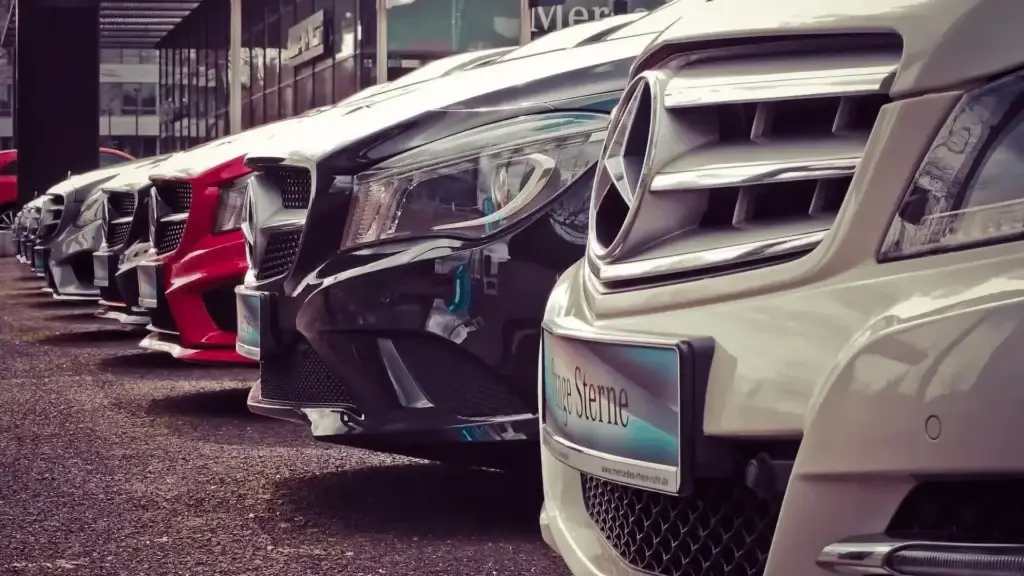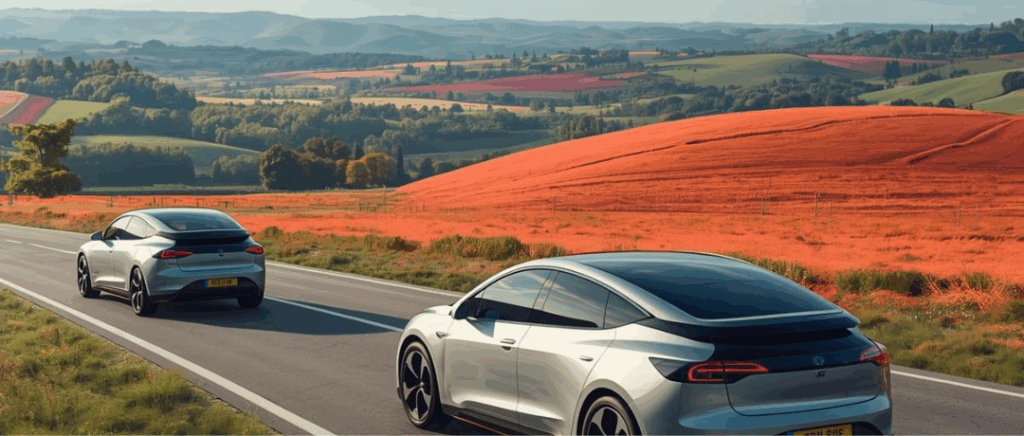Our experts answer your questions with a smile
Monday to Friday 9am - 12.30pm - 2pm - 7pm
The benefits of insurance vehicle fleet
Save time and money
Initially, this insurance can be adapted to your actual needs. Companies can adapt their policy by adding or removing cover. This allows them to pay a fair price, in line with the risks represented by the vehicles in their fleet.
What's more, having just one contract for a group of vehicles saves the company a considerable amount of time and money. Having only one contract to manage means that procedures and communication with the insurance company (or broker) are fluid, fast and efficient.
As for the financial gain, this is explained by the fact that a single contract, covering a group of vehicles, offers a better return per vehicle in terms of insurance, than several individual contracts for the company's entire fleet. This is the famous volume purchasing technique.There are also financial gains to be made by simplifying the management process. As the company has a single fleet insurance contract, management and accounting costs are deducted from the company's expenses.
To find out more: How can insurance help the adoption of electric vehicles?
Car fleet insurance: low malus potential
Secondly, the advantage of fleet insurance is that it does not include the coefficient de réduction majoration (CRM), which is found in conventional contracts. The premium is calculated each year on the basis of the number of claims made during the previous policy year. For this type of policy, the premium is calculated when the policy expires.
That said, all accidents in the vehicle fleet must be reported to the insurer by the person contractually responsible for them. These are kept in the AGIRA (Association pour la Gestion des Informations sur le Risque en Assurance) database, which can be consulted by insurers. Logically, thanks to this database, insurers are able to check all the information that companies send them when the contract is drawn up.
The company must therefore establish a single main driver for the entire fleet, taking care to include all potential employees as occasional drivers on the contract. In the event of a claim, as with ancar insurance classic; only the principal insured will be responsible for reporting the accident and paying the premiums.
At each renewal date, the amount of the insurance premium will therefore be calculated on the basis of the claims reported in the previous year and the profiles of the different drivers (primary, secondary, occasional).
A negotiable contract
As there is no reduction-majoration coefficient¹, the motor fleet insurance contract gives the insured the opportunity to negotiate their contract.
This applies both when the policy is taken out and when it is renewed.
In addition, a large number of additional guarantees can be added, such as multi-risk professional cover, assistance with no mileage excess, theft, glass breakage, etc.
Depending on the structure of the contract offered by the insurer and the negotiations undertaken by the insurer, some companies manage to cover their vehicle fleets as well as possible, with the cover that is best suited to them, while trying to get rid of the less useful cover in order to keep premiums reasonable.
It is therefore even more useful for the future policyholder to take a good look at the various companies offering this type of insurance, to compare their offers carefully and, finally, to negotiate them before taking out the policy.
To find out more: Vehicle benefits in kind: a guide to understanding everything.
What are the different classifications of car fleets?
Company car
A company car is a vehicle made available to employees by the company. The vehicle is used by the employee for both professional and personal purposes. The employee may therefore use it outside working hours.
This is a benefit in kind that is subject to social security contributions.
Read also : buying a company car: a bad idea?
Service car
Unlike a company car, a company car cannot be used outside working hours. It is therefore not considered a benefit in kind, and no social security contributions are deducted.
To find out more: electric company car vs service car: what's the difference?
2-wheel vehicle
Often used by couriers, delivery drivers, etc., companies can add 2-wheelers to their fleets. These make it easier for employees to get around in traffic jams and in town.
Trucks
Trucks are vehicles weighing more than 3.5 tonnes.
They are only requisitioned for the transport of goods.
There are 2 types of truck:
- The straight truck.
- The lorry.
The straight truck is used to transport a container or heavy equipment directly from its chassis. The tractor truck is used to tow a container.
Commercial vehicles
A vehicle is considered to be a commercial vehicle when it is used to transport goods and weighs less than 3.5 tonnes, unlike its lorry counterpart. It must also comply with specific dimensions. It must be less than 12 metres long and 2.60 metres wide.
Get a car policy with Beev!
Need a car policy for your company? Beev will provide you with a free personalised car policy for your company.
What car fleet insurance and cover should I choose?
Mandatory guarantees
By law, all motor vehicles, including land vehicles, must have at least third-party insurance in France. More commonly known as the civil liabilityIf a person A causes damage to a person B, this cover will pay the victim's material and physical compensation. This is one of the most important types of insurance for company directors. In the event of an accident, the company will not be held financially liable.
How do you choose your car fleet insurance package?
When it comes to insurance, there are several options available. These are :
- Single third party cover (minimum compulsory) : c'is the minimum required for all motorists. It is the least expensive of the packages, because its level of cover is also the lowest. It covers only the material and physical damage you are likely to cause to other road users.
- Extended third-party cover : c'is the one that generally offers the best value for money.
Extended third-party cover is based on the same principles as simple third-party cover, but optional cover may be added. These include cover for natural disasters, technological incidents, terrorist attacks, fire, theft and glass breakage. - Comprehensive insurance cover : oe finish with what is surely the best known: comprehensive insurance.
This is the most comprehensive option, but as you can imagine, it's also the most expensive. In short, this cover indemnifies you whatever happens, whatever the circumstances. We recommend this option if your vehicle is very valuable.
Optional cover
Depending on its sector of activity and the risks that the company incurs through its activities, it will modulate the formula to which it subscribes by the following options:
- Transport insurance
It will cover goods destroyed in the event of a claim or theft.Driver and any passenger cover will indemnify third parties (non-drivers) transported in the MTB (motorised land vehicle) in the event of a claim.We recommend that you take out this insurance if you regularly transport high-value goods.
- Collision damage cover
A less protective variant of comprehensive cover is collision damage cover. This only covers at-fault accidents involving an identified third party.
- Tracker service
The tracker service enables your vehicles to be tracked by GPS. It can be offered to you directly by your insurer if you have mileage-based insurance. This tracker enables you to analyse your driving habits, the average distances covered and the speed at which you drive. Depending on the data collected, the insurer will offer you a higher or lower price for your vehicle insurance.
Another useful application for the tracker service is that it can also be used to protect your fleet, making it easier to locate your vehicles if they have been stolen.
How do you choose an insurance company for your vehicle fleet?
All insurance brokers and companies will be able to draw up a contract for a vehicle fleet. In most cases, all these insurance companies have very similar offers and formulas. That's why it's necessary to put these different offers in competition with each other. In the majority of cases, this strategy pays off, since the different insurance companies that compete will endeavour to offer the most comprehensive package.to attract potential customers.
Several factors come into play when choosing an insurer:
- The first step is to obtain quotes from various organisations.
- It should be noted that the amounts of contributions depend on the number of cars and drivers, car models, distances travelled annually, the sector in which the activities are carried out and the type of activity.
- Secondly, it's a good idea to do a budget simulation to get an idea of the approximate cost of your fleet insurance premiums.
Key points to remember
A car fleet is a company's fleet of 3 or more vehicles. Car fleet insurance allows you to insure all the vehicles in your fleet under a single contract, enabling you to use a bulk rate and therefore save money.
There are 3 types of insurance:
- third-party insurance (cheapest)
- extended third-party insurance (intermediate solution)
- comprehensive insurance (the most comprehensive, but also the most expensive)
There are a number of optional cover options, some of which, such as the tracker service, will lower the price of your insurance.
To find out more: Everything you need to know about the car fleet.
































